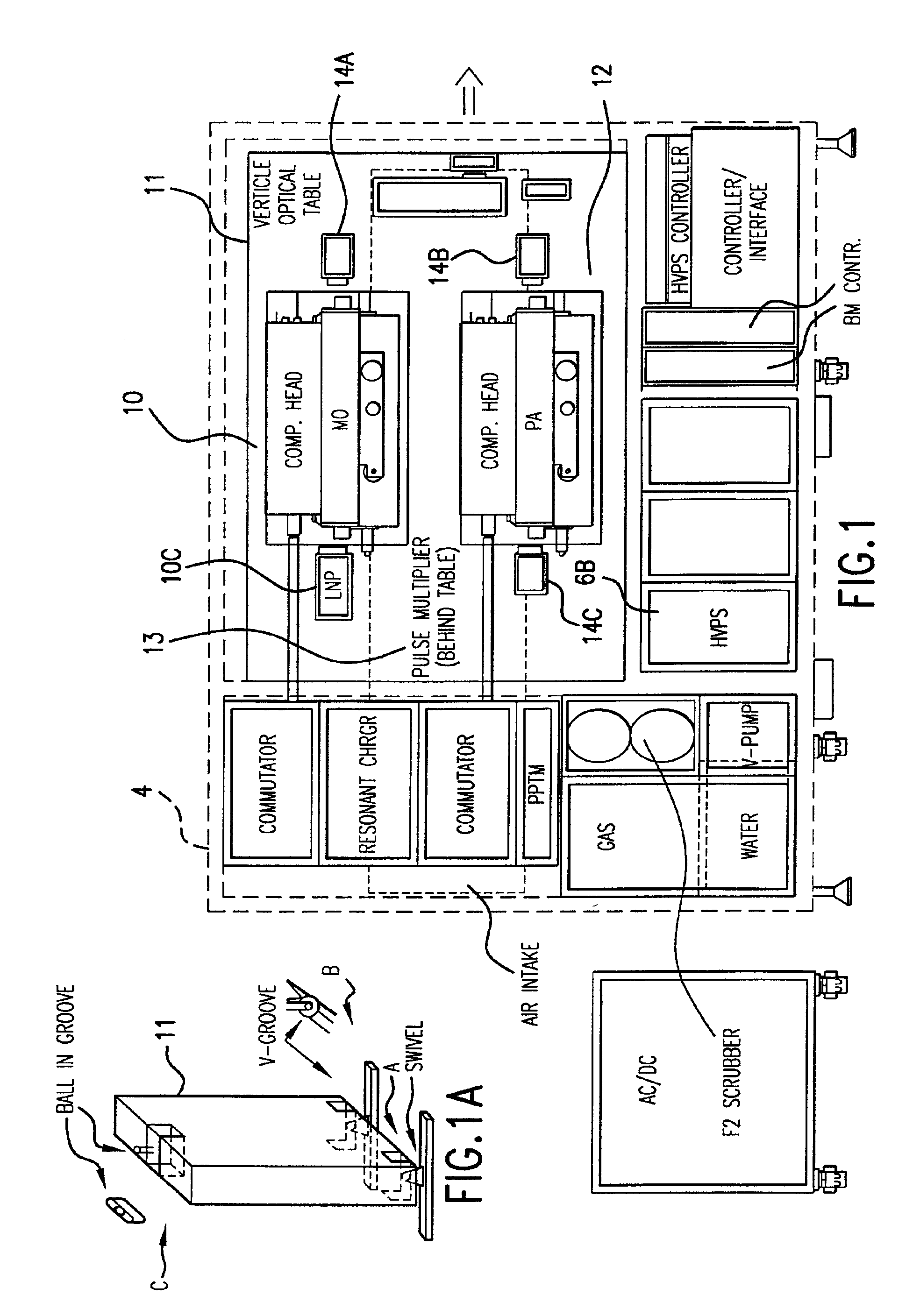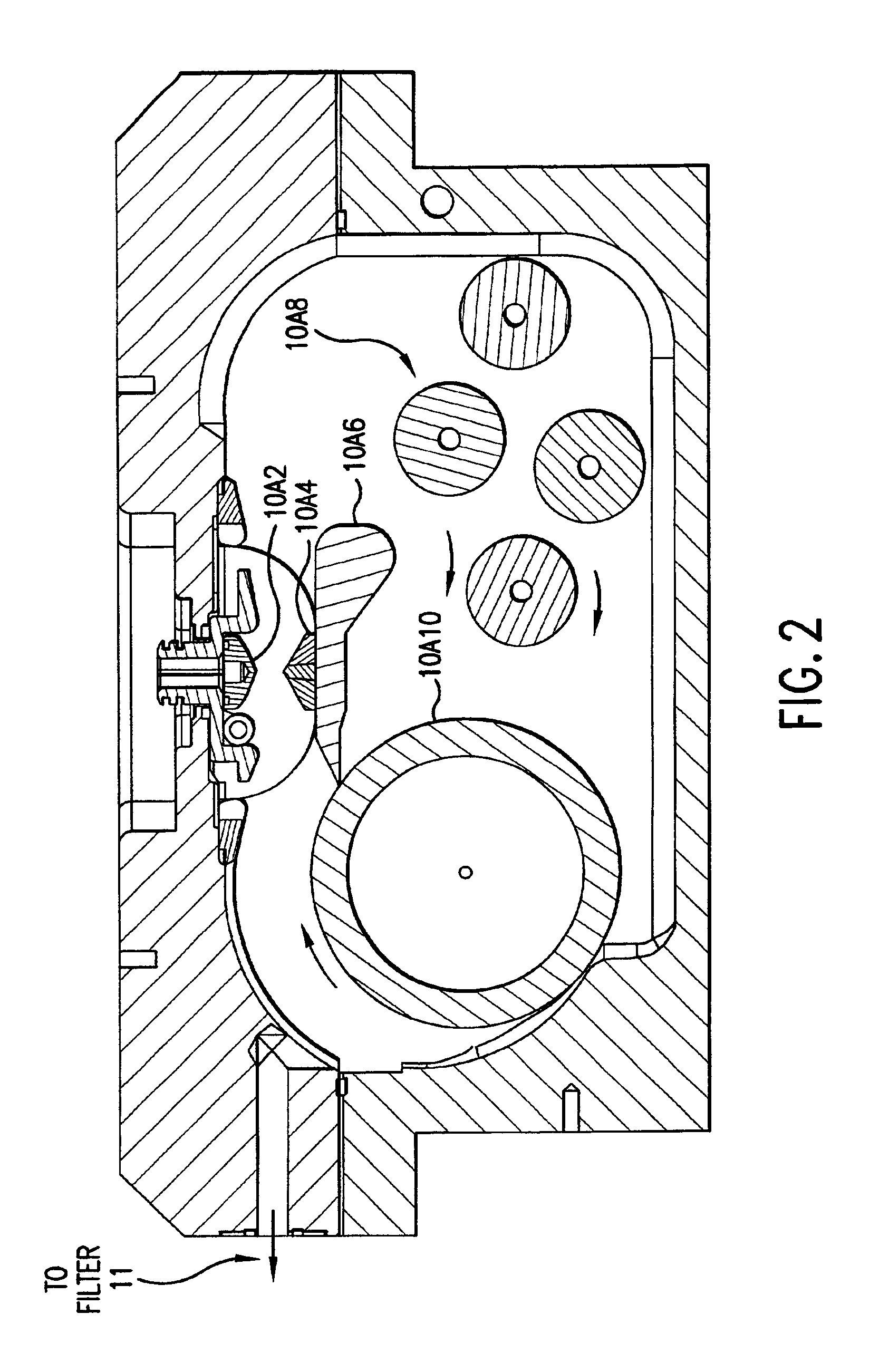Timing control for two-chamber gas discharge laser system
a gas discharge laser and time control technology, applied in the direction of instruments, photomechanical equipment, active medium materials, etc., can solve the problems of adversely affecting wavelength and/or bandwidth, affecting the quality of laser beams, and affecting the stability of laser beams. the effect of reducing the cost of operation, bandwidth, and improving the control of wavelength
- Summary
- Abstract
- Description
- Claims
- Application Information
AI Technical Summary
Benefits of technology
Problems solved by technology
Method used
Image
Examples
Embodiment Construction
Preferred embodiments of the present invention can be described by reference to the drawings.
Preferred Layout
FIG. 1 is a preferred general layout of a two-chamber ArF discharge laser system configured as a master oscillator power amplifier (MOPA) system. The system includes the following features which are described in much more detail in U.S. patent application Ser. No. 10 / 012,002 filed Nov. 30, 2001. Features included are:(1) The two chambers and the laser optics are mounted on a vertical optical table 11 which is kinematically mounted within the laser cabinet 4. The chambers are supported on stiff cantilever arms bolted to the optical table. In this design the master oscillator 10 is mounted above the power amplifier 12.(2) A high voltage power supply 6B is contained within laser cabinet 4. This two chamber-ArF 4000 Hz system needs only a single 1200 volt power supply. The same is true for a 4000 Hz KrF system. The laser cabinet, however, is provided with space for two additional...
PUM
| Property | Measurement | Unit |
|---|---|---|
| voltages | aaaaa | aaaaa |
| charging voltage | aaaaa | aaaaa |
| voltage electrical potential | aaaaa | aaaaa |
Abstract
Description
Claims
Application Information
 Login to View More
Login to View More - R&D
- Intellectual Property
- Life Sciences
- Materials
- Tech Scout
- Unparalleled Data Quality
- Higher Quality Content
- 60% Fewer Hallucinations
Browse by: Latest US Patents, China's latest patents, Technical Efficacy Thesaurus, Application Domain, Technology Topic, Popular Technical Reports.
© 2025 PatSnap. All rights reserved.Legal|Privacy policy|Modern Slavery Act Transparency Statement|Sitemap|About US| Contact US: help@patsnap.com



